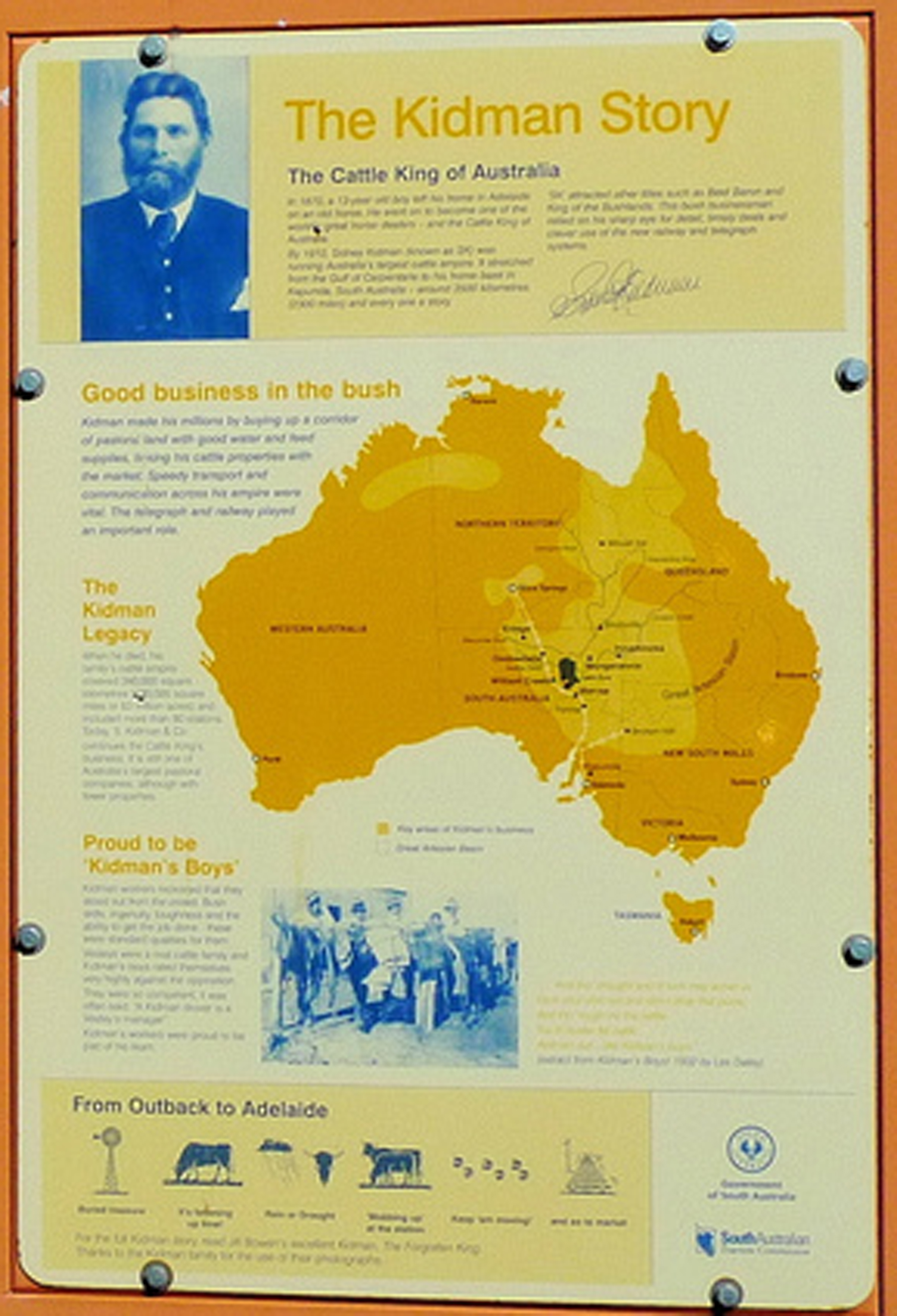Farm & Ranch
Sir Sidney Kidman “The Cattle King”

By Samantha Hall
Sidney Kidman was born in a small town in southern South Australia on the of May 9, 1857.
He was the third of three boys born to his parents who were farmers who had moved to Australia from Suffolk, England in 1849. Kidman’s father died while he was only six months old. Kidman left home not long after finishing primary school with five shillings (about a nickel) to his name and mounted on a one eyed horse. Kidman worked for drovers and graziers all across South Australia and Western New South Wales learning the ins and outs of the cattle industry and the land from both white and Native stockmen.
He even tried his hand in the shearing sheds as a roustabout. Following the discovery of copper in the western New South Wales town of Cobar in 1870, Kidman put away enough money to establish a butcher’s shop in the township to supply meat to the miners who were flooding into town.
In 1878 Kidman received an inheritance of 400 pounds from his grandfather, and he continued to work his butcher shop and began trading cattle and horses with his 400 pounds. He eventually had such an impressive string of horses put together that he was able to supply the British Army based in India with horses.
In 1886 Kidman purchased his first cattle station “Owen Springs” on the Hugh River southwest of the town of Alice Springs in the Northern Territory (right in the center of Australia). He was by then a renowned bushman and excellent cattleman who had a detailed knowledge of the country he resided on. Kidman’s land holdings continued to grow, making it possible for him to move cattle from drought affected areas to better feed and the ability to sell cattle in higher markets. Due to his expanse of land, Kidman was able to survive the depression and the otherwise crippling drought of 1902.
To read more pick up a copy of the September 2017 NTFR issue. To subscribe call 940-872-5922.
Farm & Ranch
Managing Show Cattle Through The Winter

By Heather Welper
Husband and wife duo, Heather and Calvin Welper, are the Co-Owners and Operators or Two C Livestock, located in Valley View, Texas.
The pair’s operation has a show cattle focus where they raise and sell purebred heifers of all breeds and club calf Hereford steers.
When it comes to show cattle, the Welpers know a thing or two including how to prepare for the cold winter months and the Texas major show season run.
To read more, pick up a copy of the November edition of North Texas Farm & Ranch magazine, available digitally and in print. To subscribe by mail, call 940-872-5922.

Farm & Ranch
Double M Ranch & Rescue

By Hannah Claxton, Editor
As the sun rises each day, so do the dozens of mouths that Meghan McGovern is responsible for getting fed. Rather than the sounds of a rooster crowing, McGovern hears the bellows and bleats of a variety of exotic deer, the chortle of kangaroos, the grunts of water buffaloes, and the chirps of a lemur.
Nestled against the banks of the Red River, the Double M Ranch and Rescue, with its high game fences and deer sprinkling the landscape,s its in stark contrast to the surrounding ranches.
“Having deer is kind of like eating potato chips- you can never actually have just one,” said McGovern with a laugh.
McGovern has several herds to take care of- fallow deer, axis deer, water buffalo, goats, and bison. In smaller numbers, there’s also a few kangaroos, a lemur, a potbelly pig, a pair of zebras, a watusi, and a few horses.
To read more, pick up a copy of the November edition of North Texas Farm & Ranch magazine, available digitally and in print. To subscribe by mail, call 940-872-5922.

Farm & Ranch
Acorn Toxicity

By Barry Whitworth, DVM, MPH
With the prolonged drought, most pastures in Oklahoma end up in poor condition. With the lack of available forage, animals may go in search of alternative foods.
If oak trees are in the pastures, acorns may be a favorite meal for some livestock in the fall. This may result in oak poisoning.
Oak leaves, twigs, buds, and acorns may be toxic to some animals when consumed.
To read more, pick up a copy of the November edition of North Texas Farm & Ranch magazine, available digitally and in print. To subscribe by mail, call 940-872-5922.

-

 Country Lifestyles2 years ago
Country Lifestyles2 years agoScott & Stacey Schumacher: A Growth Mindset
-

 Country Lifestyles8 years ago
Country Lifestyles8 years agoStyle Your Profile – What your style cowboy hat says about you and new trends in 2017
-

 HOME8 years ago
HOME8 years agoGrazing North Texas – Wilman Lovegrass
-

 Outdoor10 years ago
Outdoor10 years agoButtercup or Primrose?
-

 Country Lifestyles5 years ago
Country Lifestyles5 years agoAmber Crawford, Breakaway Roper
-

 Country Lifestyles9 years ago
Country Lifestyles9 years agoJune 2016 Profile – The man behind the mic: Bob Tallman
-

 Country Lifestyles8 years ago
Country Lifestyles8 years agoDecember 2016 Profile, Rusty Riddle – The Riddle Way
-

 Equine1 year ago
Equine1 year agoThe Will to Win




